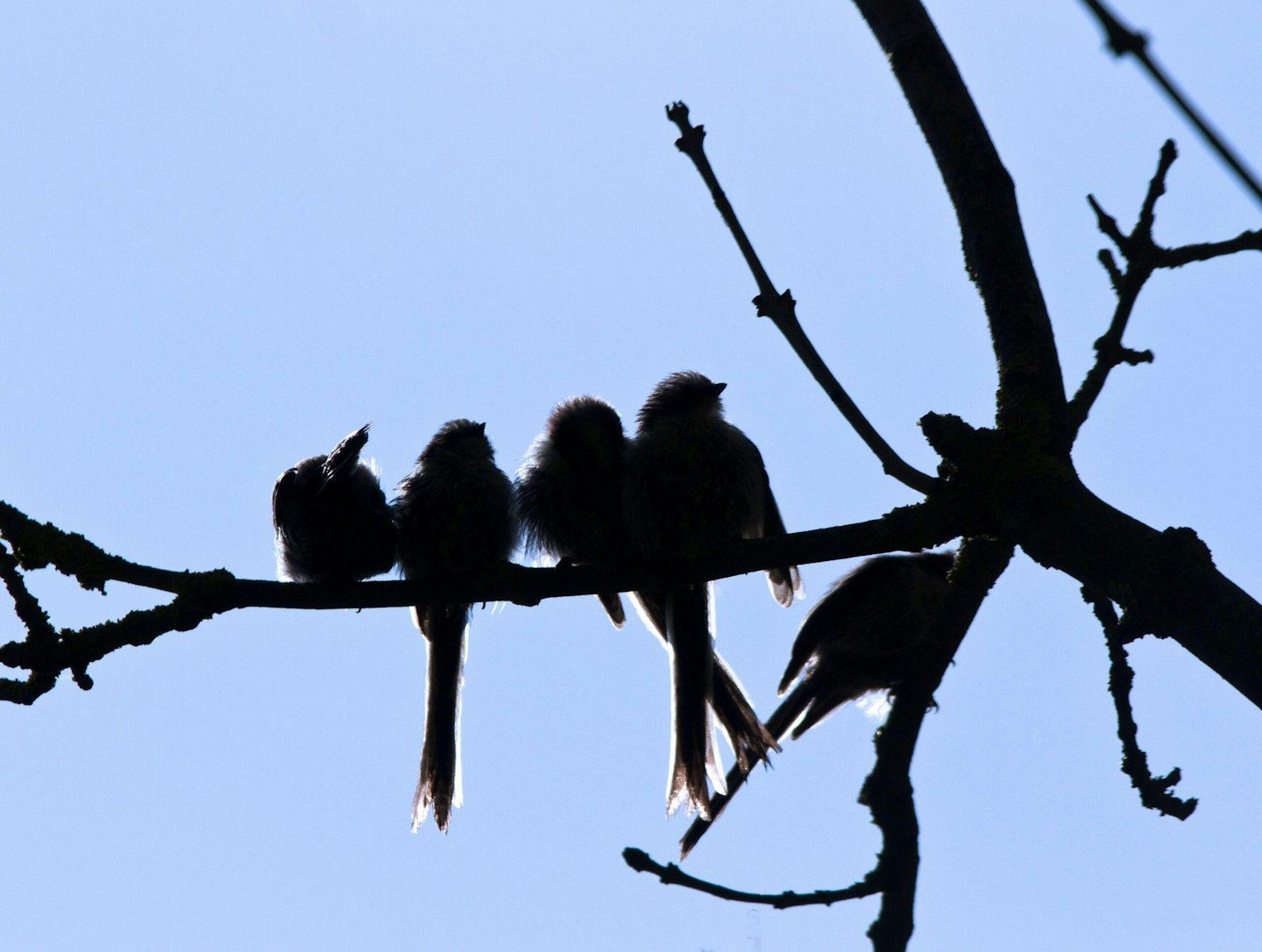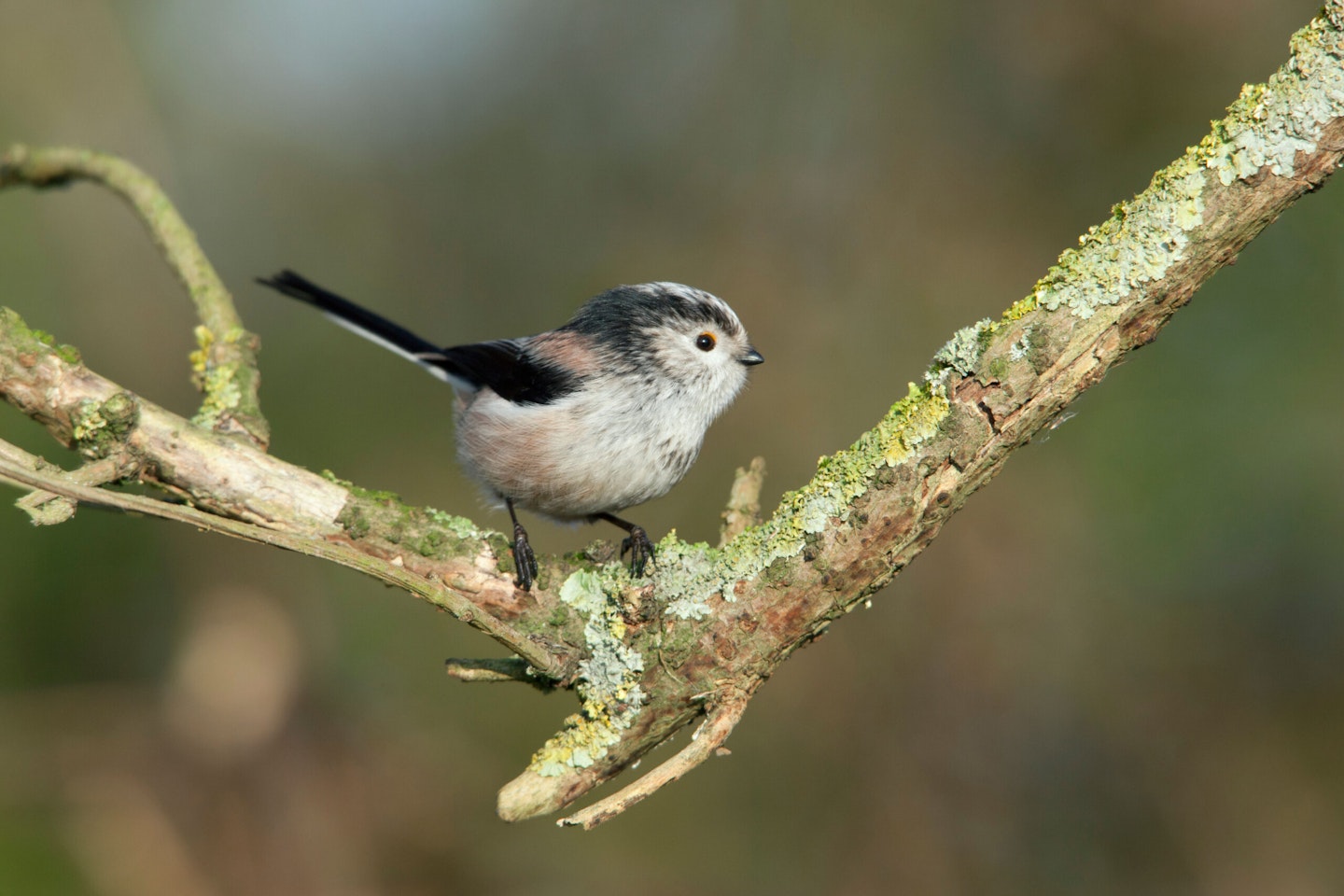BY IAN PARSONS
The Long-tailed Tit is not a typical tit, in fact it isn’t actually a tit at all! It turns out that the long-tailed visitor to your bird feeders is actually more closely related to the babblers of India and South-east Asia than it is to the Blue Tits and Great Tits that we associate it with. But the long tail is longer than the rest of the body, so other than not being closely related to the true tits, the Long-tailed Tit is a very well-named bird indeed!
They are also on the increase, which is an unusual thing in British birds and one that is definitely worth celebrating, especially as a main part of their preferred habitat is towns and cities – meaning that these delightful little birds are an increasingly common sight for many of us.
Feeding the birds in your garden is a great way to see lots of species close up, it is a rewarding experience for us and one that many people are rightly enthusiastic about. It is also very important for many bird species, with the Long-tailed Tit being a great example: the reason that this bird is doing so well in the urban and semi-urban habitats of our towns and cities is because of us feeding the birds in our gardens.
But, just because the Long-tailed Tit is doing well doesn’t mean that life is easy for it. The population in the UK is extremely vulnerable to the weather, with very cold winters resulting in large drops in numbers the following year.
But it isn’t just the winter weather that can cause problems for the bird, the weather in spring and autumn is also strongly linked to the bird’s survival, with studies showing that warm weather in both seasons has a positive effect on numbers, whereas wet springs and cold autumns have a negative effect on numbers.
However, Long-tailed Tits are able to bounce back relatively quickly from periods of bad weather thanks to their potential breeding output. The result is large fluctuations in their overall numbers year on year; thankfully though, the trend is an upward one at the moment.
The winter is the time that Long-tailed Tits are at their most obvious. They form loose flocks ranging from five to 30 birds (even up to 50!) that rove the local area looking for feeding opportunities. Sometimes these flocks intermingle with other small birds, while at other times they are purely Long-tails!

Being in the middle of one of these feeding parties is always a delight. Their soft, bubbly contact calls fill the air and you find yourself surrounded by these great little birds, hanging off the branches above your head or flitting past your face as they move from tree to tree, seemingly oblivious to your presence.
Birds form flocks for many reasons. For example, the more eyes there are, the better the chance a predator will be spotted early enough for the flock to take avoiding action. More birds can also mean more chance of finding food (although it then has to be shared!), but it seems as if Long-tailed Tits form their flocks for another reason. They form them to keep warm.
While, undoubtedly, the birds get other benefits from grouping together, it seems that a major reason behind this behaviour is to help the birds get through the long, cold winter nights.
THE THREAT OF WINTER FOR LONG-TAILED TIT
Long-tailed Tits are tiny birds. Their long tail makes them look bigger than they are, but the reality is they are very small. Small bodies lose warmth far more quickly than larger ones and, therefore, Long-tailed Tits are prone to hypothermia during the chilly nights of winter.
To combat this, the group of Long-tailed Tits get very busy as dusk approaches, feeding up before selecting a nice thick shrub or tree to roost in. Within the confines of the branches the birds huddle together. By getting up close and personal with the other members of the flock, who are often related, they minimise the amount of heat that they lose. It is a brilliant and sociable adaptation.

Come the spring, with its warmer nights, the flocks disperse and the birds pair up to breed. The breeding season starts early for these little birds, often in February, but the reason for the early start has nothing to do with maximising the broods it can produce in the one year – it is all about their fabulous nest, an avian architectural wonder.
The nests are basically a large pouch with a small entrance hole towards the top, constructed by both the male and female. They can take up to three weeks to make. They are made by using moss, lichen, feathers and spider silk, which the birds gather from the silk egg cocoons of various spider species. There are around 6,000 individual components used to make these wonderful structures. The spider silk is the glue holding together the moss, lichen and feathers, but it is even cleverer than that.
A study of the construction of the nests revealed that the spider silk is used to form small loops that snare the tiny, hook-like leaves of the moss, creating a strong bond that prevents the nest falling apart, even when it is full of youngsters. You have to wonder if the person who invented Velcro ever watched Long-tailed Tits make a nest...

Once the nest is constructed, the birds then need to line it, and this itself is a mighty task. The tits line it with soft downy feathers, but they don’t just use one or two, they use about 2,000! It is amazing to think that they are able to find that many downy feathers, but find them they do, and the nest must be really comfortable as a result.
I remember, many years ago, approaching a Goshawk nest site early in the season to check occupancy (under licence of course). On my way in to the site, I passed the raptors’ main plucking post (always a great thing to check out!) and, as I did, I flushed up a Long-tailed Tit.
At the time, it didn’t register with me what this bird was doing, but as I think about it now it makes sense. A plucking post is going to be a great source of downy feathers. Nothing is wasted in nature.
Despite the care and attention that goes into building the nest, many actually fail. When this happens, the adults involved sometimes help out with a nearby nest, helping to provide the young with food and to keep predators away.
The birds that do this are often related to the birds that they are helping, so they benefit by ensuring the future of related offspring. It is also thought that they gain experience, which may mean that the following year they are less likely to suffer a nest failure again.
One thing is for certain, this behaviour greatly benefits the young in the nest. Studies have shown that they have much greater survivability if their parents have been helped out in rearing and defending them. The Long-tailed Tit is a social bird. Whether they are helping a relation rear their young or snuggling up to them in the depths of winter to keep warm, these are birds that look out for each other.
WHERE TO SEE LONG-TAILED TITS
You can see these little birds pretty much anywhere, except for the far north and west of Scotland. Look (and listen) for them in woodland, farmland hedgerows, scrubland, parkland and also in your garden – check your feeders!
They will form a flock with other tit species during the winter months.
ALTERNATIVE NAMES FOR LONG-TAILED TIT
Old English names for the Long-tailed Tit include: Long-tailed Pie, Mumruffin, Bottle Tit, Bum Barrel, Bum Towel, Oven Bird, Bag and Hedge Jug to name a few!
LONG-TAILED TIT FACT-FILE
Scientific Name: Aegithalos caudatus
Length: 13-15cm (8cm of which is the tail!)
UK numbers: 340,000 UK breeding territories
Habitat: Towns and cities
Diet: Mostly insects, occasionally seeds in autumn.
